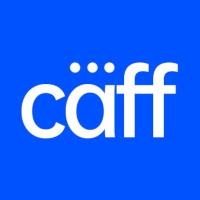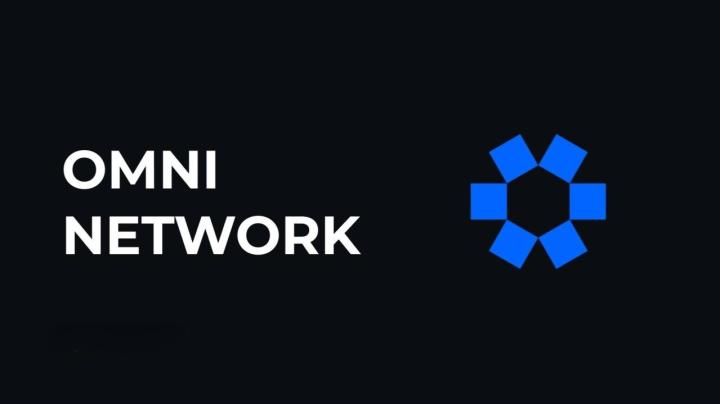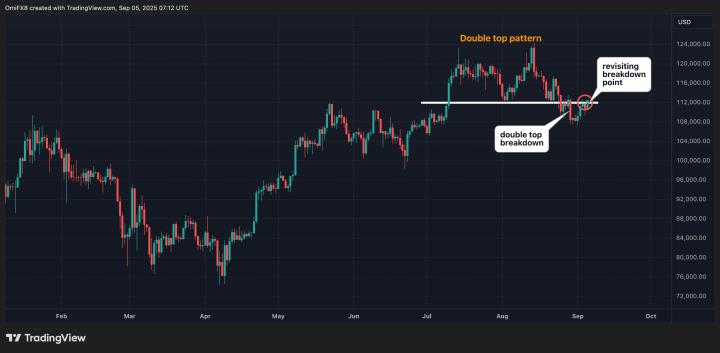What operational secrets and growing pains are hidden in this $7.4 billion digital game?
Original text: : : [Issue] What I Learned from Analyzing 12 Tokenized US Treasuries
Author: @100y_eth
Compiled by Saoirse, Foresight News
Translator's Note : In the wave of real-world assets (RWAs), U.S. government bonds are undoubtedly one of the most dazzling ones, and their tokenization activity is quite active. Behind this is their extremely high liquidity, stability, relatively high yield, as well as the growing institutional participation and ease of tokenization.
You might be wondering if this tokenization involves complex legal mechanisms. Actually, it does not. Instead, it relies on the transfer agent responsible for managing the official shareholder register to use blockchain instead of the traditional internal database.
To more clearly analyze major U.S. government bond tokens, this article constructs three analytical frameworks: a token overview encompassing protocol details and issuance volume, a regulatory framework and issuance structure, and on-chain application scenarios. It's worth noting that since U.S. government bond tokens are digital securities and subject to securities laws and related regulations, this characteristic significantly impacts their issuance volume, number of holders, and on-chain application scenarios. These seemingly unrelated factors actually interact dynamically. Furthermore, contrary to popular belief, U.S. government bond tokens also have numerous limitations. Let's delve deeper into the development and future of this field.
Tokenization of Everything
“Every stock, every bond, every fund, every asset can be tokenized.”
— Larry Fink, CEO of BlackRock
Since the passage of the GENIUS Act in the United States, global interest in stablecoins has surged, including in South Korea. But are stablecoins truly the endgame for blockchain finance?
Stablecoins, as the name suggests, are tokens pegged to fiat currencies on public blockchains. Essentially, they are still currencies and must find application scenarios. As explored in the " Hashed Open Research x 4Pillars Stablecoin Report ," stablecoins can be used in a variety of areas, including remittances, payments, and settlements. However, the area currently being hotly debated as the "ultimate potential for stablecoins" is real-world assets (RWAs).
RWA (Real-World Assets) refers to tangible assets that circulate on the blockchain in the form of digital tokens. In the blockchain industry, RWA typically refers to traditional financial assets such as commodities, stocks, bonds, and real estate.
Why has RWA become the focus after stablecoins? Because blockchain can not only change the form of currency, but also has the potential to reshape the underlying structure of the traditional financial market.
Today's traditional financial markets still rely on extremely outdated infrastructure. While fintech companies have improved the front-end experience for retail users by increasing the accessibility of financial products, the back-end trading model remains stuck in the past half a century.

Take the US stock and bond trading markets, for example. Their current structure stems from reforms in the 1970s following the "paperwork crisis" of the late 1960s. The Securities Investor Protection Act and amendments to the Securities Act were enacted, leading to the emergence of institutions such as the Depository Trust Company (DTC) and the National Securities Clearing Corporation (NSCC). This complex system, operating for over 50 years, continues to suffer from issues such as redundant intermediaries, settlement delays, lack of transparency, and excessive regulatory costs.
Blockchain is expected to fundamentally revolutionize this situation and create a more efficient and transparent market system: by upgrading the back-end of the financial market through blockchain, it can achieve functions such as instant settlement, programmable finance driven by smart contracts, direct ownership without intermediaries, higher transparency, lower costs and fragmented investment.
For this reason, many public institutions, financial institutions, and enterprises are actively promoting the blockchain tokenization of financial assets. For example:
- Robinhood plans to support stock trading through its own blockchain network and has submitted a proposal to the US SEC calling for the establishment of a federal regulatory framework for RWA tokenization;
- BlackRock partnered with Securitize to launch BUIDL, a $2.4 billion tokenized money market fund;
- SEC Chairman Paul Atkins has publicly supported equity tokens, and the SEC’s internal cryptocurrency working group has formalized regular meetings and roundtable discussions related to RWAs.

(Source: rwa.xyz)
Despite the hype, the RWA market is experiencing rapid growth. As of August 23, 2025, the total value of RWAs issued reached $26.5 billion, representing an increase of 112% from one year prior, 253% from two years prior, and 783% from three years prior. Tokenized financial assets are diverse, with U.S. government bonds and private credit showing the fastest growth, followed by commodities, institutional funds, and equities.
U.S. government bonds

(Source: rwa.xyz)
In the RWA market, the tokenization of US government bonds is the most active. As of August 23, 2025, the US bond RWA market size was approximately US$7.4 billion, a 370% increase over the previous year, showing explosive growth.
It's worth noting that both traditional financial institutions and decentralized finance (DeFi) platforms around the world are actively investing in this sector. For example, BlackRock's BUIDL fund leads the way with $2.4 billion in assets. DeFi protocols like Ondo have launched funds like OUSG, based on bond-backed RWA tokens like BUIDL and WTGXX, with a total asset value of approximately $700 million.
Why have U.S. government bonds become the most active and largest tokenized sector in the RWA market? Here are the reasons:
- Liquidity and stability : U.S. Treasury bonds have the deepest liquidity in the world and are considered a "safe asset" with no default risk, enjoying strong credibility.
- Improved global accessibility : Tokenization lowers the investment threshold, allowing overseas investors to more easily participate in U.S. Treasury bond investments;
- Expanded institutional participation : Leading institutions such as BlackRock, Franklin Templeton, and WisdomTree are leading the market by issuing tokenized money market funds and Treasury bond products, providing investors with trust endorsement;
- Stable and substantial returns : U.S. Treasury bond yields are stable and relatively high, averaging about 4%;
- Tokenization is easy : Although there is no regulatory framework specifically for RWAs, the basic tokenization of U.S. Treasury bonds is feasible within the scope of existing regulations.
U.S. Government Bond Tokenization Process
How exactly does one tokenize U.S. Treasury bonds on-chain? While seemingly involving complex legal and regulatory mechanisms, the process is actually quite simple, provided it adheres to existing securities laws. (The issuance structures of different tokens vary, so only representative methods are described here.)
One thing needs to be made clear first: the currently issued "RWA tokens based on U.S. Treasury bonds" do not directly tokenize the bonds themselves, but rather tokenize U.S. Treasury-based funds or money market funds.
Traditionally, public asset management funds, such as U.S. Treasury bonds, are required to appoint an SEC-registered "transfer agent." This type of financial institution or service company is entrusted by the issuer to manage investor ownership records for the fund. Legally, transfer agents are central to securities recordkeeping and ownership management, bearing the official responsibility for safeguarding fund investors' shares.
The tokenization process for a U.S. Treasury bond fund is straightforward: tokens representing fund shares are issued on-chain, and the transfer agent manages the official shareholder register through internal operations on the blockchain system. In short, the database maintaining shareholder records is simply moved from a private system to a blockchain.
Of course, since the US has yet to establish a clear regulatory framework for RWAs, token holders currently don't guarantee 100% legally protected ownership of fund shares. However, in practice, transfer agents manage fund shares based on on-chain token ownership records. Therefore, absent hacking or other unforeseen circumstances, token ownership can often indirectly protect fund share ownership.
Key protocols and RWA analysis framework

Tokenization of U.S. Treasury funds is the most active area in the RWA industry, and as a result, numerous protocols have issued related RWA tokens. This article analyzes 12 major tokens across three dimensions:
(1) Token Overview
This includes a brief introduction to the issuance protocol, the issuance volume, the number of holders, the minimum investment amount, and the management fee. Because each protocol varies in fund structure, tokenization method, and on-chain utility, analyzing the issuance protocol can quickly grasp the core characteristics of the token.
- Issuance volume: reflects fund size and market acceptance;
- Number of holders: This indicates the fund's legal structure and on-chain application scenarios. A low number of holders may be due to securities laws requiring investors to be high-net-worth accredited investors or qualified purchasers. These tokens are typically restricted to whitelisted wallets, making them difficult to hold, transfer, or trade within DeFi protocols.
(2) Regulatory framework and issuance structure
Clarify the national regulatory rules that the fund follows and sort out the various entities involved in fund management.
After analyzing 12 RWA tokens based on US Treasury bond funds, their regulatory frameworks can be divided into the following categories based on the fund’s registration location and fundraising scope:
- Regulation D Section 506(c) + Investment Company Act Section 3(c)(7)
The most widely used framework. Section 506(c) of Regulation D allows public fundraising from an unspecified number of investors, but requires all investors to be "accredited investors," and issuers must rigorously verify their identities through documents such as tax records and asset verification. Section 3(c)(7) of the Investment Company Act exempts private funds from SEC registration requirements, but requires all investors to be "qualified purchasers" and the fund to maintain a private placement structure. The combination of the two can expand the investor base while circumventing regulatory burdens such as registration and disclosure, and is applicable to qualified U.S. and foreign funds. Representatives include BUIDL, OUSG, USTB, VBILL, etc.
- Rule 2a-7 of the Investment Company Act of 1940
The framework for SEC-registered money market funds requires them to maintain stable value, invest only in short-term, high-credit instruments, and maintain high liquidity. Unlike the aforementioned framework, this framework allows for public issuance to ordinary investors, resulting in a low minimum investment amount and affordable entry point for these tokens. Representative examples include WTGXX and BENJI.
- Cayman Islands Mutual Funds Law
Applicable to open-end mutual funds registered in the Cayman Islands (with flexible issuance and redemption), requiring a minimum initial investment of at least US$100,000. Representatives include USYC.
- British Virgin Islands Securities and Investment Business Act 2010 (Professional Funds)
The core law governing investment funds registered in the British Virgin Islands (BVI). "Professional Funds" are intended for professional investors (not the public) and require a minimum initial investment of US$100,000. Note: Raising funds from US investors is subject to the additional requirements of Section 506(c) of Regulation D. Representatives include JTRSY and TBILL.
- other
Depending on the fund's location of registration, local regulations apply. For example, USTBL, issued by Spiko in France, complies with the EU's Undertakings for Collective Investment in Transferable Securities Directive and the Money Market Funds Regulation; ULTRA, issued by Libeara in Singapore, complies with the Securities and Futures Act 2001.
The fund issuance structure involves seven core participants:
- Fund Entity: The legal entity that pools investor funds, often using a US trust, British Virgin Islands or Cayman Islands offshore structure;
- Fund manager: The entity that establishes a fund and is responsible for its overall operations;
- Investment Manager: The entity that actually makes investment decisions and manages the portfolio, which may be the same entity as the fund manager or a separate entity;
- Fund administration: responsible for back-end operations such as accounting, net asset value calculation, and preparation of investor reports;
- Custodian: Safely holds fund assets such as bonds and cash;
- Transfer Agent: manages the shareholder register, legally records and maintains ownership of funds or units;
- Auditor: An independent accounting firm responsible for the external audit of a fund’s accounts and financial statements, which is key to investor protection.

(3) On-chain application scenarios
One of the greatest benefits of bond fund tokenization lies in its potential applications within the on-chain ecosystem . While regulatory compliance and whitelisting restrictions hinder direct use of bond fund tokens in DeFi, some protocols have explored indirect applications. For example, DeFi protocols like Ethena and Ondo use BUIDL as collateral to issue stablecoins or include them in investment portfolios, providing indirect channels for retail users to participate. In fact, BUIDL has rapidly expanded its issuance through integration with mainstream DeFi protocols, becoming the largest bond token.
Cross-chain solutions are also crucial for improving on-chain utility. Most bond fund tokens are issued not only on a single network but also across multiple chains to increase investor choice. While their liquidity doesn't necessarily need to reach stablecoin levels, cross-chain functionality improves user experience and enables seamless transfer of tokens across multiple networks.
Revelation
After studying 12 major US Treasury bond fund RWA tokens, I found the following insights and limitations:
- Limited on-chain practicality : RWA tokens are not free to use once tokenized; they remain digital securities, subject to real-world regulatory frameworks. All bond fund tokens can only be held, transferred, or traded between whitelisted wallets that have completed KYC. This barrier makes them difficult to directly apply to the permissionless DeFi space.
- Small number of holders : Due to regulatory restrictions, the number of bond fund token holders is generally low. Money market funds targeting retail investors, such as WTGXX and BENJI, have relatively large holders. However, most funds require investors to be accredited investors, qualified purchasers, or professional investors, which limits the eligible group and makes it difficult for the number of holders to even break into double digits.
- On-chain applications are primarily B2B : Due to the aforementioned reasons, bond fund tokens currently have no direct DeFi applications for retail users and are more commonly adopted by large DeFi protocols. For example, Omni Network uses Superstate's USTB for treasury management, and Ethena issues the USDtb stablecoin using BUIDL as collateral, indirectly benefiting retail users.
- Fragmented regulation and a lack of standardization : Issuers of bond fund tokens are registered in different countries and adhere to varying regulatory frameworks. For example, BUIDL, BENJI, TBILL, and USTBL, while all bond fund tokens, fall under different regulatory regimes, resulting in significant differences in investor qualifications, minimum investment amounts, and application scenarios. This fragmentation complicates investor understanding, and the lack of unified standards hinders universal integration of DeFi protocols, limiting their on-chain practicality.
- Lack of a dedicated regulatory framework for RWAs : Currently, there are no clear rules for RWAs. Although transfer agents have recorded shareholder registers on the blockchain, on-chain token ownership has not yet been legally recognized as equivalent to real-world security ownership. Dedicated regulations are needed to bridge on-chain ownership with real-world legal ownership.
- Insufficient cross-chain solutions : Although almost all bond fund tokens support multi-chain issuance, few cross-chain solutions have been implemented. Further promotion of cross-chain technology is needed to avoid liquidity fragmentation and improve user experience.
Disclaimer: As a blockchain information platform, the articles published on this site solely reflect the personal views of the authors and guests and do not represent the position of Web3Caff. The information within these articles is for reference only and does not constitute any investment advice or offer. Please comply with the relevant laws and regulations of your country or region.
Welcome to join the Web3Caff official community : X (Twitter) account | Web3Caff Research X (Twitter) account | WeChat reader group | WeChat public account








